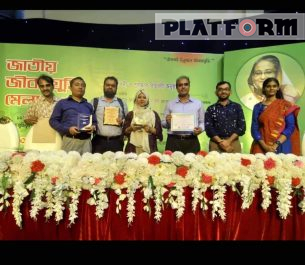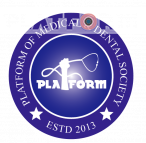২১ অক্টোবর ২০১৯:
[থিসিস ও প্রোটোকল সংক্রান্ত সমস্যার সমাধান এবং এ ব্যাপারে পরামর্শ দিচ্ছেন ডাঃ কামরুন নাহার নিপা]
Regarding Protocol:
1. Selection of topics.
2. Searching that topics in google scholar or pubmed or guidelines of different institutions (eg: Royal college, NICE guidelines)
3. After searching, you can find a suitable topic and meet your guide with that topic or you can ask whether he/she has any preference of topic.
4. Take your time and search all possible sites to find out studies that match your topic and start writing protocol. (You can buy books written on protocol and thesis writing).
5. For study design and sample size calculation, you can ask for help from respective institute’s Statistics Department.
6. While writing, save all the literatures from where you take information.
7. For full literature download you can take help from various sources (sometime you need help from unconventional web sources).
8. Book reference is a weak reference. Try not to give it (Go through the reference at the end of the particular chapter of that book or you can check the origin of reference on google).
9. Try to show your protocol step by step to your guide. This will help him/her to understand and you will get more corrections that will ultimately help you in thesis.
10. After completion, you will face IRB and according to their correction rewrite your protocol and submit as early as possible to get IRB clearence certificate (cause study time counting starts from the date of IRB clearence)
11. You can change your topic by writing application to IRB.
Regarding thesis:
1. Start data collection after IRB clearence. Inform your course mates, colleagues, juniors or seniors about your study investigation and request them to let you know when that particular patient or subject is found and collect your reports accordingly.
2. Besides you can go to outdoor department for sample collection.
3. Go to respective department where your investigations are done and ask them about the full procedure, like how the instrument works. (I mean the principle or write the instrument’s model number and specific test name and take help from google).
4. Besides, read the book named ‘How to write thesis’. Here you can find the basic concept of thesis writing, like page numbering, font size, spacing, reference writing etc.
5. If you find information from a literature where the author took the information from another study, search the later study and save it and give reference of that study.
6. After collection of your sample, please save all of your data collection sheets and make your master data sheet (do it in MS EXCEL).
7. Meet your statistian with that data sheet and make him/her understand what you want (Repeat it again and again), because it is really the most difficult part.
8. Now write your thesis step by step and show it to your guide and according to his/her suggestions continue your writing (Abstract must be unstructured and should be written in one paragraph)
9. Write thesis in Times New Roman, font size 12, line spacing should be 2. But in reference spacing should be 1.
10. Regarding page numbering – 1st page: no number. Then start with roman number (i, ii, iii, iv…) upto introduction. Then again start 1,2,3 from introduction to conclusion.
11. In Appendix must be in continuation of previous roman numbers.
12. In BSMMU, Harvard style is followed. Author, year, title, journal (italic), vol, issue no, page. Follow your own institute’s format.
13. Make your conception clear about study design, variables, inclusion and exclusion criteria. Don’t add any unnecessary variables or exclusion criteria as you have to explain it in defence.
14. Check all the tables made by statistatian and recalculate it whether it matches with master data sheet. It is very very important section.
15. Regarding Plagiarism : You can check your own plagiarism by using small SEO tools (Just paste your contents and see the results. You’ll see the plagiarized lines on red color).
16. You may take help from others studying in different universities in abroad as they have more powerful softwares.
17. And before submitting check and recheck your whole thesis, because after submission no correction can be done.
Thesis defence:
1. Most horrible one.
2. Make a power point presentation. Try to keep slides as far as less in number.
3. Take the information from your submitted thesis and be sure both are same.
4. Try to write introduction in short but make sure it contain the most important parts so that teachers can understand.
5. Clarify your rationale.
6. Font size should large enough to see clearly.
7. Try to keep 6-8 lines in one slide.
8. No need to add operational definition and ethical consideration in power point presentation.
9. Avoid repeatation of information or any line.
10. Show your power point presentation to your guide and must take his/ her suggestion.
11. After completion, match your slides with your hard copy of thesis, so that during defence you can say from which page you take it.
12. Practice your way of presentation.
13. Try to arrange a dummy defence with your coursemates.
14. Try to speak without watching slides (it will make good impression).
15. Most importantly, practice describing the tables, specially how you will speak about statistical terms.
16. Grab most important part of your tables and practice to describe it (teacher will ask you to describe)
17. Have a good knowledge of your final result table, so that you can answer confidently.
18. Mark your literatures on your hardcopy of thesis, like 1, 2, 3 this way and write the same number on hard copy of that particular literature. So that during defence if teacher wants to see the literature you can quickly find that just seeing the number. Mark the lines of your literature which you used in thesis.
19. Print 4/5 hard copies of your power point presentation and before starting presentation submit it to your teachers. It will help them to mark the lines.
20. Corrigendum : if you find a gross mistake or forget to write in your main submitted thesis, write a corrigendum in a printed copy or hand written but power point should contain correct information.
21. Be confident during presentation and don’t argue with teachers. Try to put your logic on that particular question. If teachers are still not satisfied, then be quiet.
22. Or look at your guide, sometimes guide can save you.
23. If they give correction just say Yes sir/madam (very politely).
24. After defence, meet your guide. It’s a courtesy.
25. Most importantly, take your all belongings like, hard copy of protocol, hard copy of thesis, all data sheets, master data sheet, all hard copies of literatures, laptop, pendrive on the day of defence.
26. Wear clean and sober clothes on day of defence.
That’s all
Dr. Kamrun Nahar Nipa
Resident, MS (Phase-B)
BSMMU

